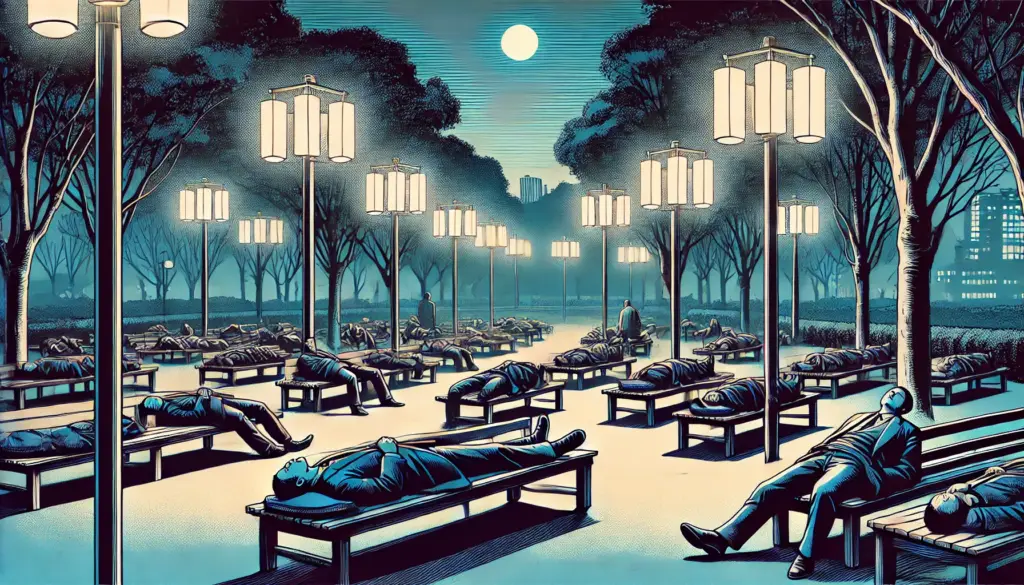
On the night of August 13, 2025, thousands of visitors to Expo 2025 Osaka found themselves in an unexpected and unprecedented situation—they simply could not go home. What began as a lively summer evening of exploration and entertainment turned into an all-night stay inside the Expo grounds, as the city’s main transportation link to the site came to a complete standstill.
A Day Like Any Other — Until It Wasn’t
Throughout the day, the Yumeshima venue buzzed with energy. Families, tourists, and locals alike explored the pavilions, sampled food from around the world, and marveled at futuristic exhibits. But shortly after 9:30 PM, the mood shifted dramatically. The Osaka Metro Chūō Line, the sole direct rail connection to Yumeshima, suffered a sudden power failure. All train services between Yumeshima and the city shut down, effectively trapping tens of thousands of people on the island-like venue.
What Caused the Blackout?
The incident was triggered by a critical electrical failure along the Metro line’s power rails. This single point of failure instantly halted all outbound trains, with no alternative rail or road routes immediately available. The Expo site, designed for massive crowds, suddenly became an unintended overnight accommodation.
Without sufficient backup transportation—such as ferries, buses, or other train lines—visitors had no realistic way to leave. For many, the only option was to stay inside the grounds until services could be restored.
From Chaos to Community: An Overnight Transformation
While some visitors reacted with frustration, others adapted quickly. Multiple pavilions chose to open their doors as makeshift shelters. The Healthcare Pavilion provided rest areas and basic medical support. The NTT Pavilion offered air-conditioned space for relief from the humid summer night. The Netherlands Pavilion distributed bottled water, and the “null2” pavilion allowed people to sit, rest, and recharge their devices.
What could have been a night of pure chaos transformed into a kind of impromptu community gathering. Strangers shared snacks, told stories, and even treated the event as an unexpected part of their Expo adventure.
The Cost of Over-Reliance on a Single Transit Line
The August 13 incident highlighted a serious vulnerability in Expo 2025’s transport planning: total dependence on a single subway line. The lack of contingency measures—such as emergency buses or maritime shuttles—meant that a single technical failure could paralyze movement for tens of thousands of people.
Urban planners and event organizers now face questions about why such an enormous international event did not have robust backup systems in place.
Voices from the Ground: Human Moments Amid Infrastructure Failure
The Overwhelmed
Families with young children struggled to keep them calm and comfortable. Elderly visitors, some with mobility issues, were visibly distressed. Medical teams responded to cases of dehydration and dizziness.
The Compassionate
Staff and volunteers across multiple pavilions went above and beyond. They offered seating, blankets, drinks, and—most importantly—reassurance. For many, the kindness of strangers helped turn a frightening night into a manageable one.
My Take: A Preventable Problem, An Unforgettable Night
The August 13 blackout was preventable. With better contingency planning—alternate transit routes, clear public communication, and designated safe zones—most visitors could have avoided being stranded.
Yet, the night also showcased something positive: the resilience and generosity of both staff and visitors. People who began the evening as strangers ended it as companions in an unusual shared experience. In that sense, it became a story that attendees will likely remember for the rest of their lives.
Recommendations for Future Events
- Multiple Transportation Options
Never depend solely on one transit route. Backup systems such as buses, ferries, and additional rail connections should be ready to activate. - Emergency Communication Plans
Clear, multi-language announcements and instructions are essential for international events. - Shelter-Ready Infrastructure
Ensure that certain buildings can quickly be converted into rest areas during emergencies. - Special Support for Vulnerable Groups
Priority assistance for families, elderly visitors, and people with disabilities should be built into emergency response protocols.
Conclusion: A Lesson for Mega-Events Everywhere
The events of August 13, 2025, at Expo 2025 Osaka serve as a wake-up call for organizers of large-scale public gatherings worldwide. Infrastructure must be resilient, contingency plans must be in place, and visitor safety must remain the top priority. While this particular night will be remembered for both its disruption and its surprising moments of camaraderie, it is also a case study in how not to let logistics fail at an event of global importance.



















































